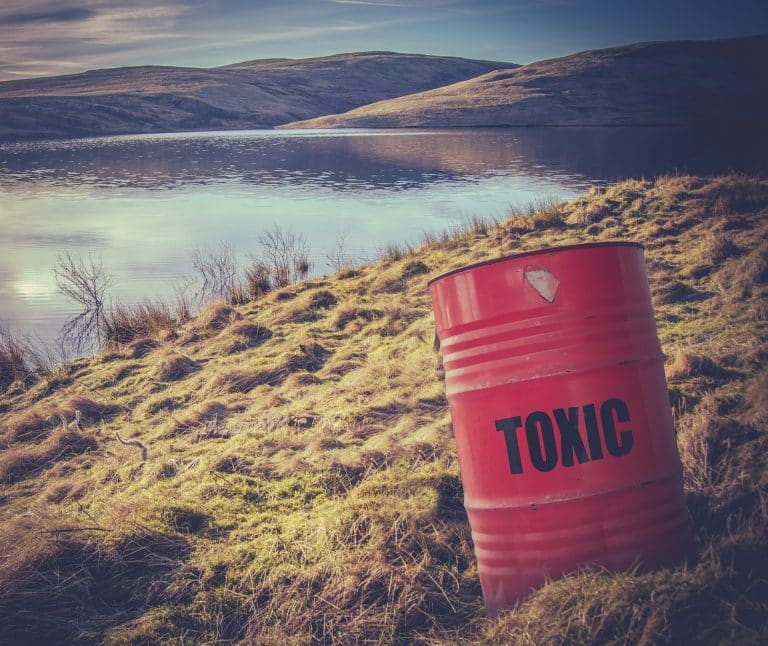
What is toxic waste? The answer is not as obvious as it may seem at first thought. The terms “toxic waste” and “hazardous waste” are frequently used interchangeably to define waste material that poses a threat to public health and the environment, which is true to a large extent. Either type of waste material does indeed pose a threat. Yet, for local, state, and federal regulatory agencies, there is a difference between the two. The Environmental Protection Agency (EPA) defines toxic and hazardous waste as not necessarily the same.
This Q&A on hazardous waste will address the distinction between “hazardous waste” and “toxic waste” and answer questions about the ‘what and where’ related to these wastes.
What is Hazardous Waste?
The EPA defines hazardous waste as “… a waste with properties that make it dangerous or capable of harming human health or the environment.” Hazardous waste may be composed of any type of physical material in any form—a solid, liquid, sludge, or gas.
Hazardous wastes are solid wastes that potentially or substantially threaten public health, animals, and/or the environment. For a waste to be classified as hazardous, the material must hold one of four characteristic properties that make it potentially hazardous—ignitability, corrosivity, reactivity, and toxicity. Thus, toxic waste is hazardous, but not all hazardous waste is classified as toxic.
What is Toxic Waste?
The EPA describes toxic waste as any chemical waste material “… that is harmful or fatal to living organisms when absorbed or ingested.” In other words, this type of waste is capable of causing death or injury to life; these materials can cause harm by being inhaled, swallowed, or absorbed through the skin. This waste can be poisonous, radioactive, explosive, carcinogenic (causing cancer), mutagenic (causing damage to chromosomes), teratogenic (causing birth defects), or bioaccumulative (toxins that increase in concentration at the high ends of the food chain). Even waste containing dangerous pathogens, such as used syringes, can be considered toxic.
What is Solid Waste?
The Resource Conservation and Recovery Act (RCRA), which provides a regulatory framework to manage and distinguish between hazardous and non-hazardous wastes, broadly defines “solid waste” as any refuse or garbage, wastewater treatment plant sludge, water treatment plants, or air pollution control facility and other discarded material, generated by “industrial, commercial, mining, and agricultural operations, and from community activities.” Solid waste includes not just physical materials but liquid, semi-solid, and the waste contained in and generated from gaseous material.
Where Does Toxic and Hazardous Waste Come From?
Toxic and hazardous waste results from industrial, chemical, and biological processes. Such wastes are generated as a function of operation by numerous industries, public, and private biomedical research, healthcare, energy, food, and agrochemical production, among other sectors. Chemical manufacturing, the manufacturing of petroleum and coal products, pesticides, fertilizer, nuclear energy and weapons, waste treatment and disposal, laboratory waste, iron, and steel production, and even everyday household products like cleaning products, batteries, cosmetics, medicine, pharmaceuticals, and electronics are all examples of how hazardous waste is generated and where it comes from.
What Are the Types of Toxic Waste Products?
There are general categories from which toxic waste products are derived: medical, chemical, and radioactive.
Medical Waste
Medical waste ranges from tissues, tissue samples, or fluids capable of carrying pathogens and infectious disease-causing microorganisms to materials and containers that store and transfer them.
Chemical Waste
Chemical waste is a broad category of waste products that contain any type of solid waste considered acutely poisonous, flammable, corrosive, carcinogenic, mutagenic, teratogenic, or able to cause a reactive interaction, such as an explosion or toxin, when two or more chemicals are combined. Heavy metals like arsenic, cadmium, chromium, lead, and mercury, among others, are also classified as chemical wastes.
Radioactive Waste
Radioactive waste is derived from the elements and compounds that produce or absorb ionizing radiation. Included in this category are any materials that interact or are in contact with radioactive elements and compounds. The water and rods used to moderate nuclear reactions in power plants are prime examples of radioactive toxic waste products.
Contact the Professionals at MLI Environmental
Hazardous waste and toxic waste can jeopardize work environments large and small. To that end, MLi Environmental offers comprehensive hazardous and non-hazardous waste management services for various industries. Our team of experienced, certified technicians, professional drivers, and environmental chemists are trained to manage your waste streams effectively and efficiently to ensure the safety of all. If you have more questions on hazardous waste and-or toxic waste, MLi has the answers. Contact us today!
